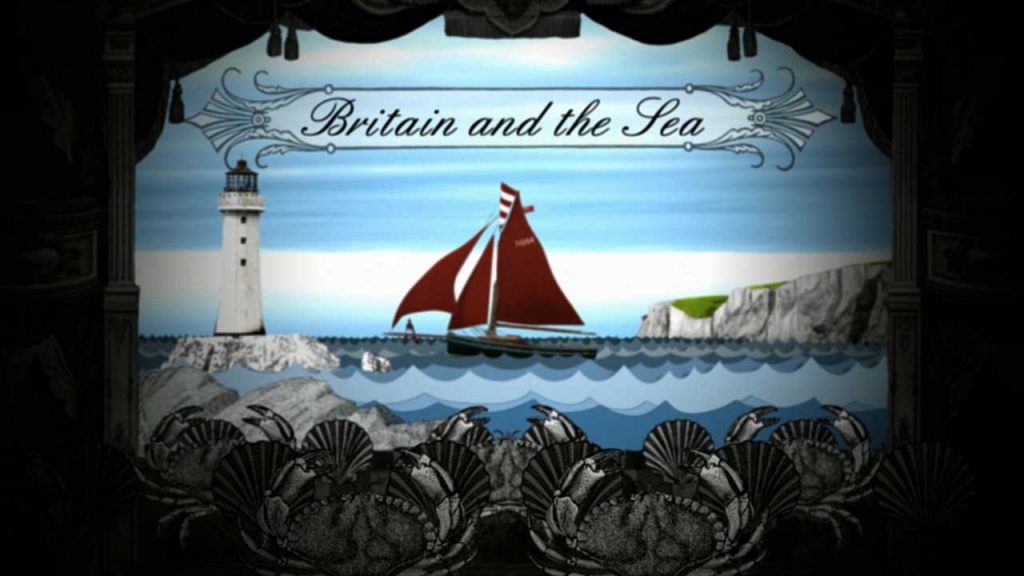Britain and the Sea episode 1: David Dimbleby sails the south west coast of England – along the coast of Devon and Cornwall – in his own sailing boat, Rocket, exploring maritime history, art and architecture as he goes. Caught up in stormy weather, he makes it to safety in the nick of time, to tell the story of Sir Francis Drake and a fantastic array of adventurers, explorers, pirates and smugglers.
It’s also a chance for David to enjoy some of Britain’s most beautiful coastline and turn his hand to a bit of art himself. David also gingerly submits himself to one of the oldest maritime art forms of all – the art of the tattoo. David visits Mount Edgcumbe to pay homage to someone who put the sea at the heart of our national life.
Britain and the Sea episode 1
Devon
Devon is a county in South West England, reaching from the Bristol Channel in the north to the English Channel in the south. It is bounded by Cornwall to the west, Somerset to the north-east and Dorset to the east. The county includes the districts of East Devon, Mid Devon, North Devon, South Hams, Teignbridge, Torridge and West Devon and the city of Exeter, its county town. The other two large urban areas Plymouth and Torbay are each geographically part of Devon, but are administered as unitary authorities. Combined as a ceremonial county, Devon’s area is 6,707 km2 (2,590 square miles) and its population is about 1.2 million.
Devon derives its name from Dumnonia (the shift from m to v is a typical Celtic consonant shift). During the British Iron Age, Roman Britain and the early Middle Ages, this was the homeland of the Dumnonii Brittonic Celts. The Anglo-Saxon settlement of Britain resulted in the partial assimilation of Dumnonia into the Kingdom of Wessex during the eighth and ninth centuries. The western boundary with Cornwall was set at the River Tamar by King Æthelstan in 936. Devon was later constituted as a shire of the Kingdom of England.
Cornwall
Cornwall is a historic county and ceremonial county in South West England. It is recognised as one of the Celtic nations, and is the homeland of the Cornish people. Cornwall is bordered to the north and west by the Atlantic Ocean, to the south by the English Channel, and to the east by the county of Devon, with the River Tamar forming the border between them. Cornwall forms the westernmost part of the South West Peninsula of the island of Great Britain. The southwesternmost point is Land’s End and the southernmost Lizard Point. Cornwall has a population of 568,210 and an area of 3,563 km2 (1,376 sq mi). The county has been administered since 2009 by the unitary authority, Cornwall Council. The ceremonial county of Cornwall also includes the Isles of Scilly, which are administered separately. The administrative centre of Cornwall is Truro, its only city.
Cornwall was formerly a Brythonic kingdom and subsequently a royal duchy. It is the cultural and ethnic origin of the Cornish diaspora. The Cornish nationalist movement contests the present constitutional status of Cornwall and seeks greater autonomy within the United Kingdom in the form of a devolved legislative Cornish Assembly with powers similar to those in Wales, Scotland and Northern Ireland. In 2014, Cornish people were granted minority status under the European Framework Convention for the Protection of National Minorities, giving them recognition as a distinct ethnic group.
